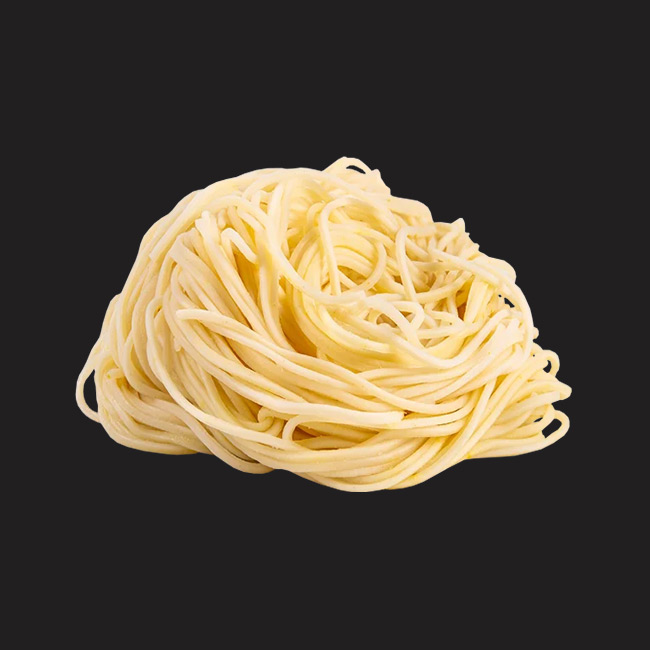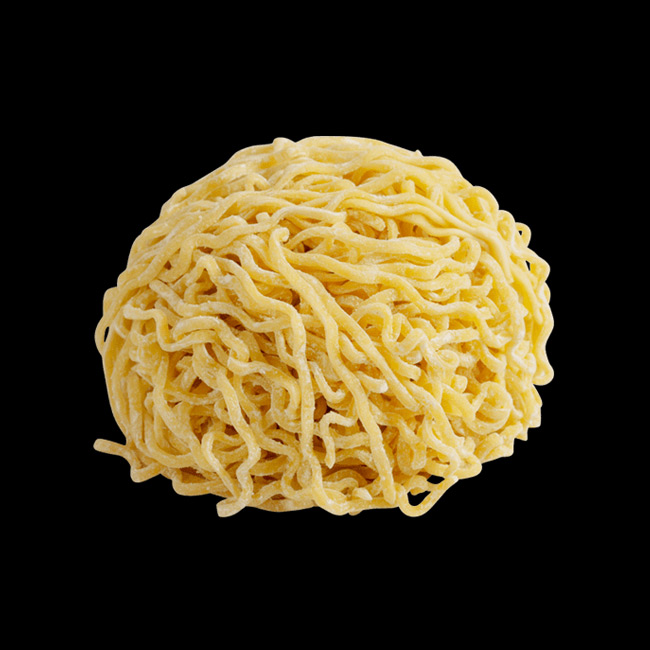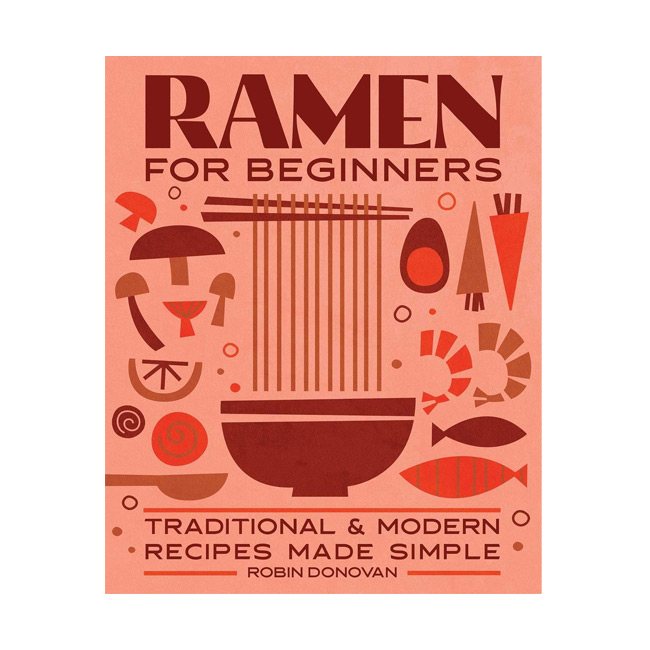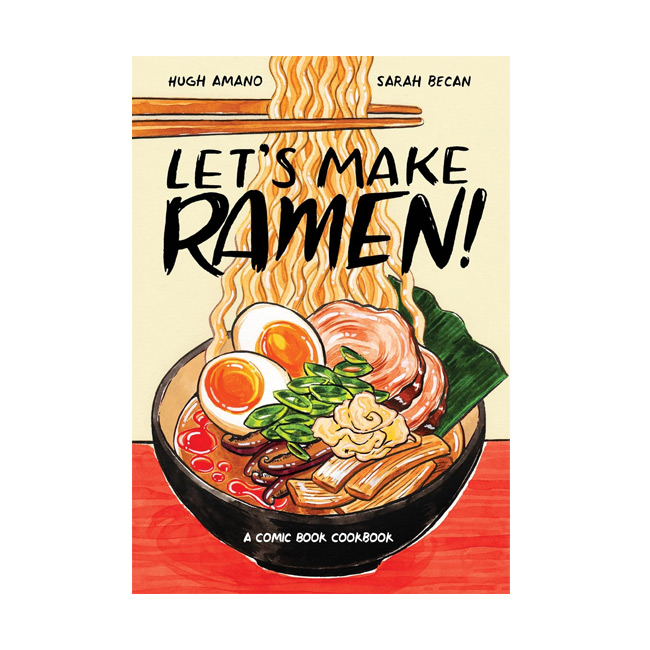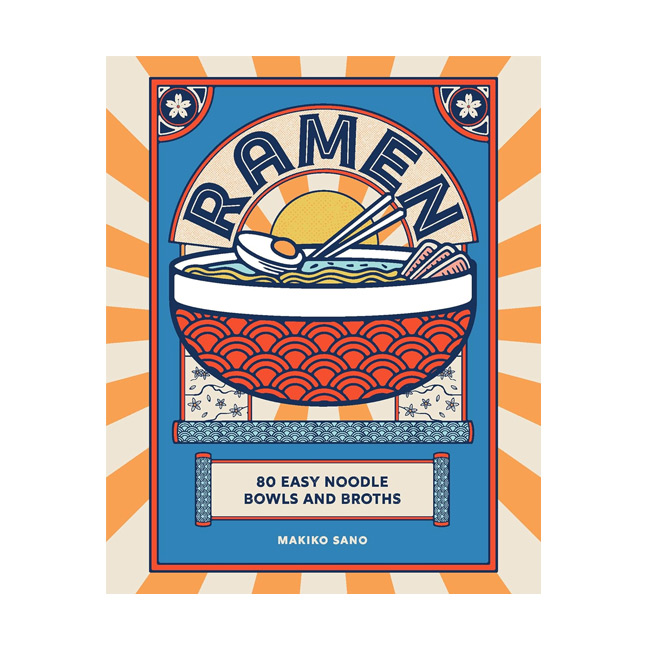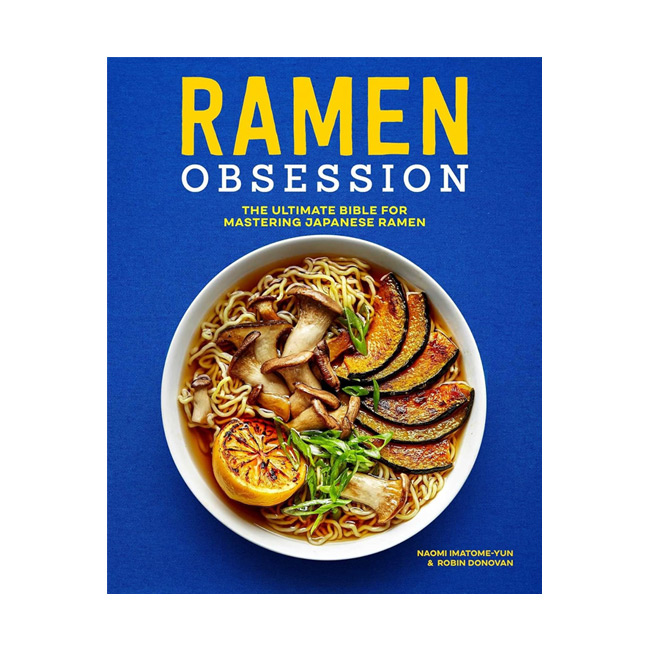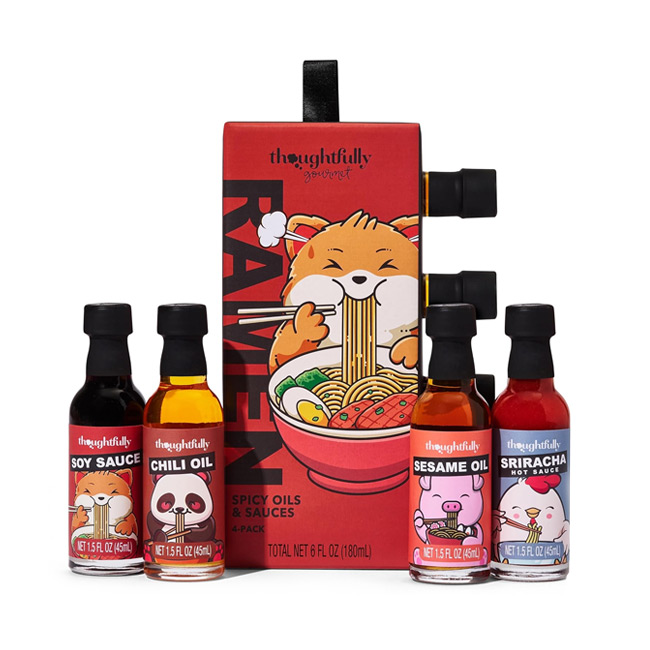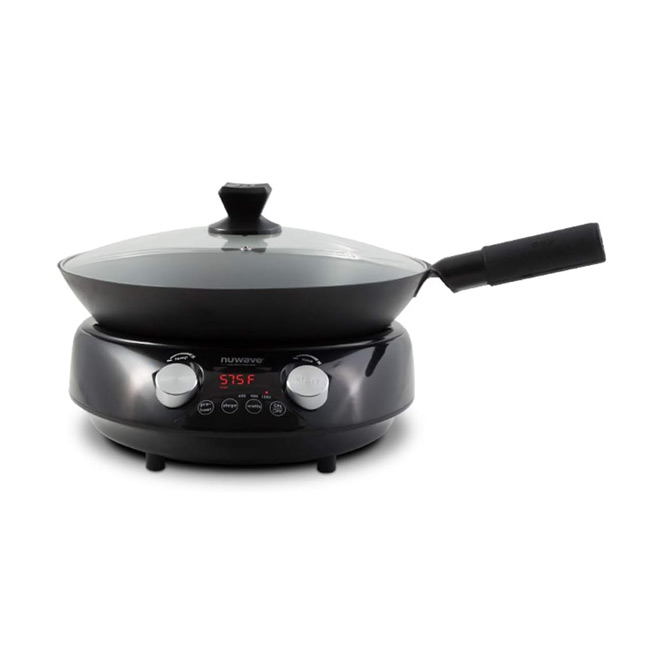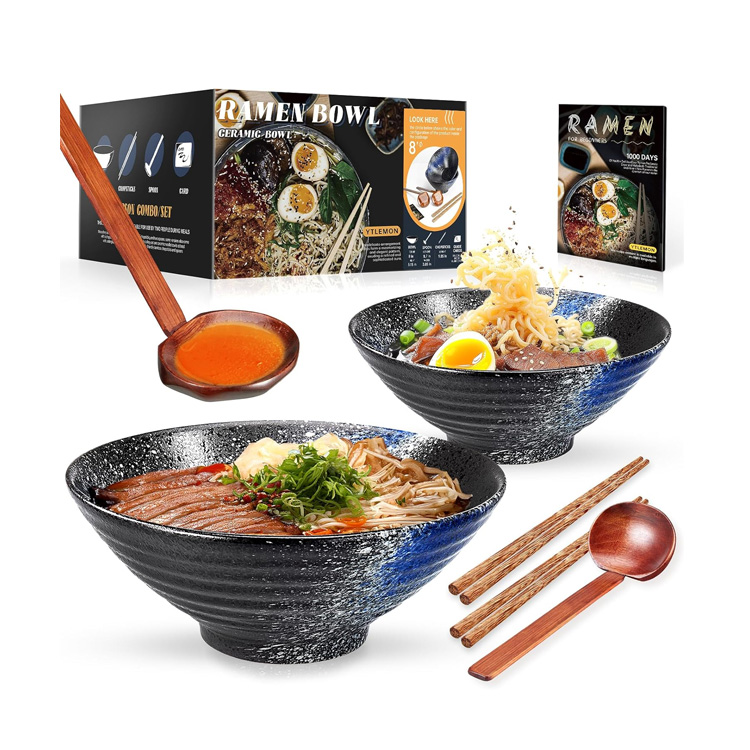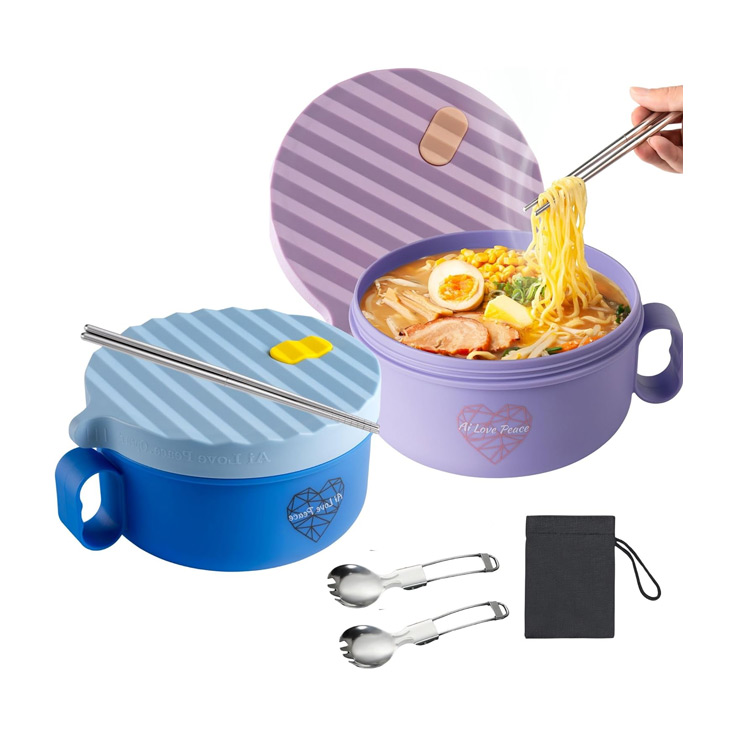Thin noodles, known as hosomen (細麵 – ほそめん), are a staple in the world of ramen, characterized by their light and delicate texture. Made from wheat flour, water, and kansui (an alkaline mineral water), these noodles are distinguished by their slender, fine strands with plenty of chew and bounce.
Hosomen noodles have a subtle, almost ethereal quality (being so thin) that allows them to absorb the flavors of the broth without becoming overwhelming. Hosomen also cook quickly, making them a convenient option for a fast yet satisfying meal. They are particularly favored in lighter ramen dishes where the broth takes center stage, allowing the nuanced flavors to shine through while providing a pleasant, unobtrusive base.
Related noodles: Futomen (thick noodles) – Chukamen (regular noodles)
Usage and Selection
Hosomen are typically used in ramen dishes with lighter broths, such as shio (salt) and shoyu (soy sauce) ramen. Their delicate nature ensures they don’t overpower the subtlety of these broths, offering a harmonious balance between noodle and soup. A popular alternative to hosomen is wavy noodles or Chijiremen.
When selecting hosomen, look for noodles with a smooth, even texture and a slight yellowish hue. This hue means the noodles are rich in kansui, which imparts the noodles’ unique chewiness. Fresh hosomen are ideal for achieving the best texture and flavor, but high-quality dried options are also available and can be equally satisfying.
Cooking hosomen requires attention to avoid overcooking; they should be boiled just until tender but still firm to the bite. The reason you have to be extra careful when cooking these noodles is they are, in fact, the thinnest of the three most popular kinds (the other two being thick futomen and wavy chijiremen).
How are Hosomen Made
Hosomen are made by mixing wheat flour, salt, and water into a dough, which is then kneaded, lightly oiled, and stretched to a very thin diameter using a machine or by hand. This results in long, fine noodles that are typically less than 1.3 millimeters thick. The process is similar to making somen noodles, with the key difference being the extremely thin size of hosomen.
Thin Noodles and Ramen
Thin noodles are versatile and find their place in various ramen styles.
Thin noodles are a popular choice for ramen dishes with lighter broths, because, as I mentioned, they allow the subtle flavors to be the star of the show. Their delicate texture and quick cooking time make them ideal for various regional and traditional ramen styles, too.
Here are some of the most common types of ramen that feature thin or hosomen noodles:

Shoyu Ramen
Shoyu ramen uses a clear and salty soy sauce broth and is considered fairly balanced, with many comforting flavors.
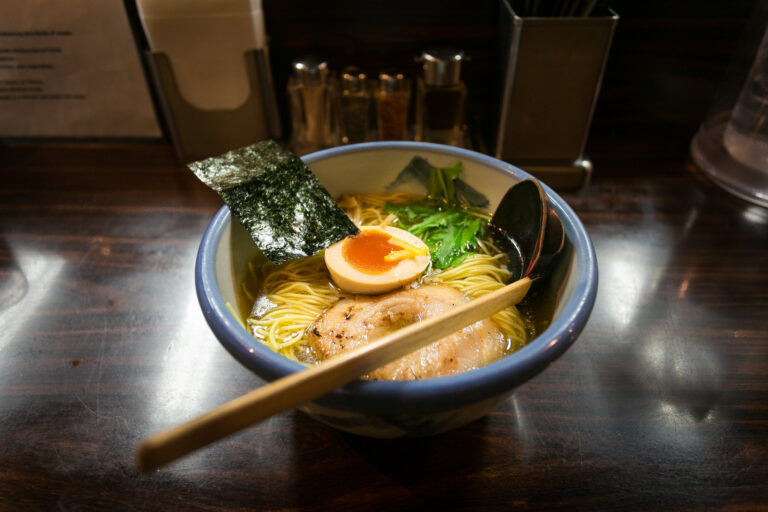
Shio Ramen
Shio Ramen is based on chicken broth. Its main seasoning is salt, and its toppings are usually a refreshing mix of seafood and veggies.
![Types of Ramen: Hakata Ramen. Image courtesy of [cipher] via Flickr Commons.](https://ramendatabase.com/wp-content/uploads/2024/06/Types-of-Ramen_Hakata-Ramen-768x510.jpg)
Hakata Ramen
Hakata Ramen originates from Fukuoka and features a rich and milky tonkotsu broth and toppings like chashu and pickled ginger.
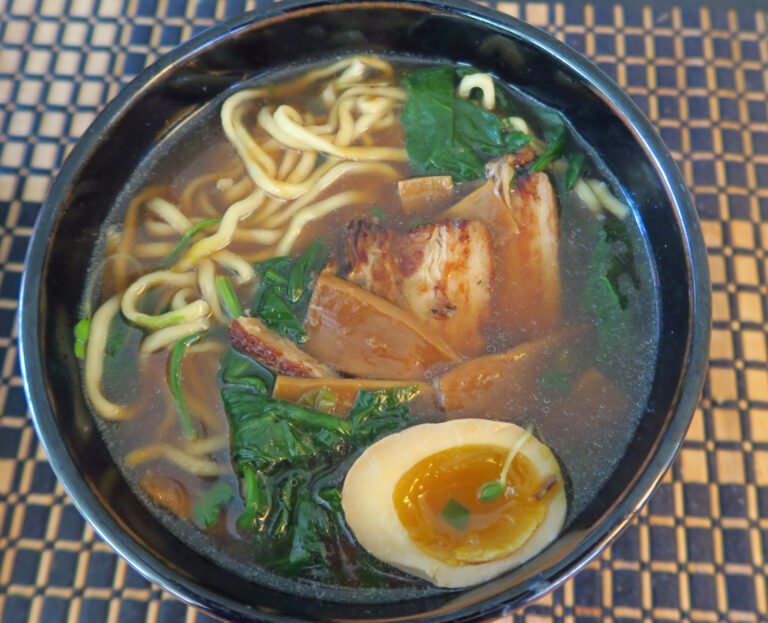
Tokyo Ramen
Tokyo ramen is a beloved Japanese soup known for its clear shoyu broth, firm curly noodles, and a soy-flavored chicken broth.



